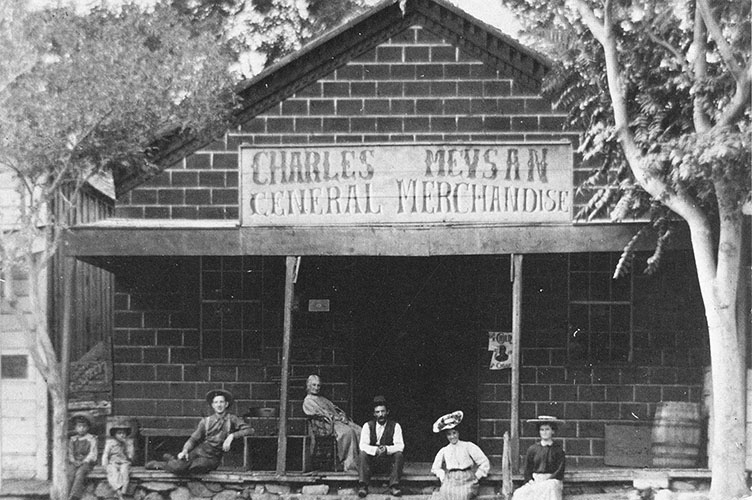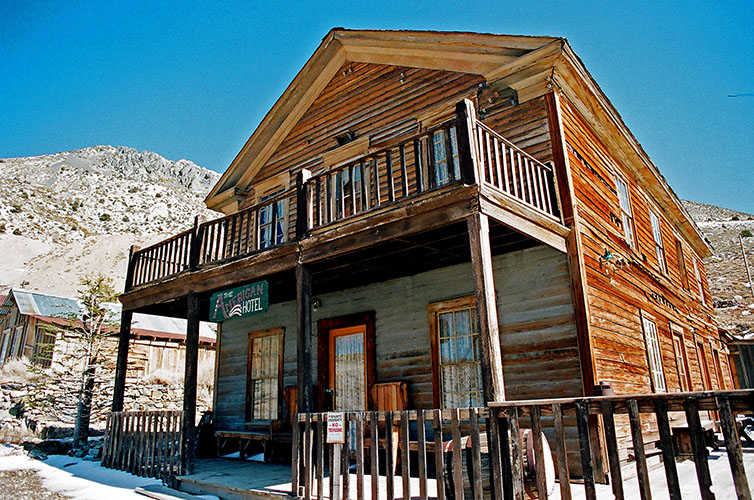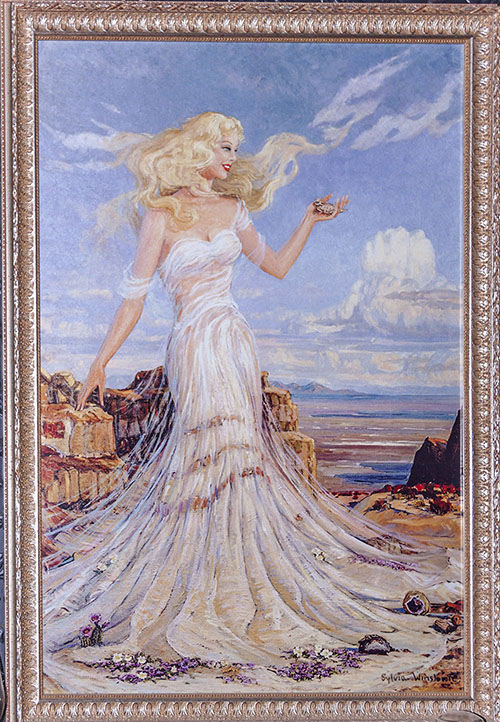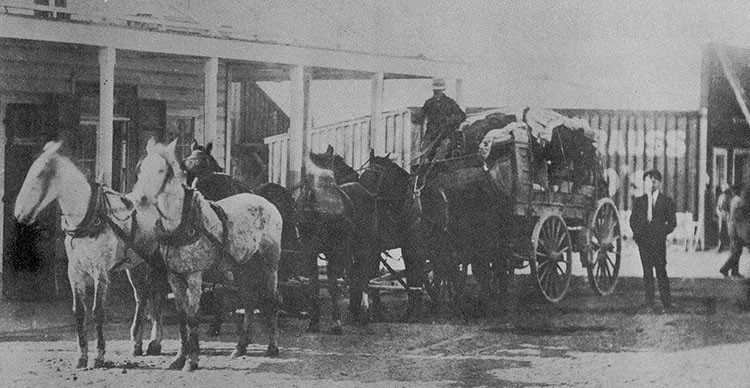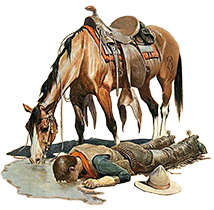




























Dear Carrie: Letters from the Eastern Sierra 1878-1899 by Kathleen Haun |
I hope these excerpts from Kathleen's book will rouse and inspire you to purchase a copy, sit by a cozy winter fire, or cool summer air conditioner, and embrace the pioneering spirit of Owens Valley. Text by Kathleen Haun Letters written in 1878 by a young woman new to the West, and found in an old trunk in the twenty-first century, reveal the daily life of a bygone era in the towns along the Eastern Sierra of California. Revealed are the early pioneers who settled this part of the state, the early ranchers, women both good and "bad', and miners who brought forth gold and silver from the mines of Cerro Gordo, Mammoth, Lundy, Aurora and Bodie. The letters describe the people, places and natural beauty of the area before it became today's recreational paradise, before its water was sent down the California aqueduct to Los Angeles, and before the long asphalt ribbon of Highway 395 cut through it. Kathleen Haun lives in the foothills of the Eastern Sierra in Lone Pine, California. She writes about the area's early history, which has contributed to its enduring pioneer spirit that can be experienced even when visiting today. See USE NOTICE on Home Page. |
Letter 2 |
Instructions from the stage driver. |
Red pulled on heavy leather gloves that fanned wide at the top much like gauntlets, stitched on the cuff with fancy Indian beadwork. A dark blue "neckerchief " around his throat with the fall of fabric to the front was often over his nose and mouth to keep out the dust. A jacket of soft yellow leather with short fringe along the under length of the sleeves and dark blue pants tucked into tall black boots gave him the look of a gallant Western figure out of a Bret Harte story, and a commander nor to be ignored.
''All right ladies and gents, listen carefully. This stage goes all the way to Aurora, Nevada where you'll change to another. Some of the way'll be steep, and if I ask you to get out and walk, do it without complaining. "Ladies, no matter what happens, don't scream. It scares the horses and irritates the hell out of me! "If it gets down to freezing, don't drink liquor. Your outer regions will just freeze quicker. "Don't complain about the food or accommodations at any of the stops. It's the best they have and at least you won't starve. There's nothing I can do about it anyway. Eat fast, don't linger over the wash basin, or out back. "No strong pipes or cigars are allowed inside the coach. And remember to spit on the leeward side. "Don't lop over your fellow passengers when sleeping and try not to snore too loud. "Have small change available for miscellaneous expenses and don't ask to borrow from the others. "Don't shoot or yell or throw stuff out the window. If you spook the horses, everyone will pay the price and I'll throw you off first chance I get. "If the team ever runs away, sit still and hang on. Don't jump or you're sure to get hurt worse. "Don't discuss politics or religion, and for damn sure, don't ever keep me waiting!” |
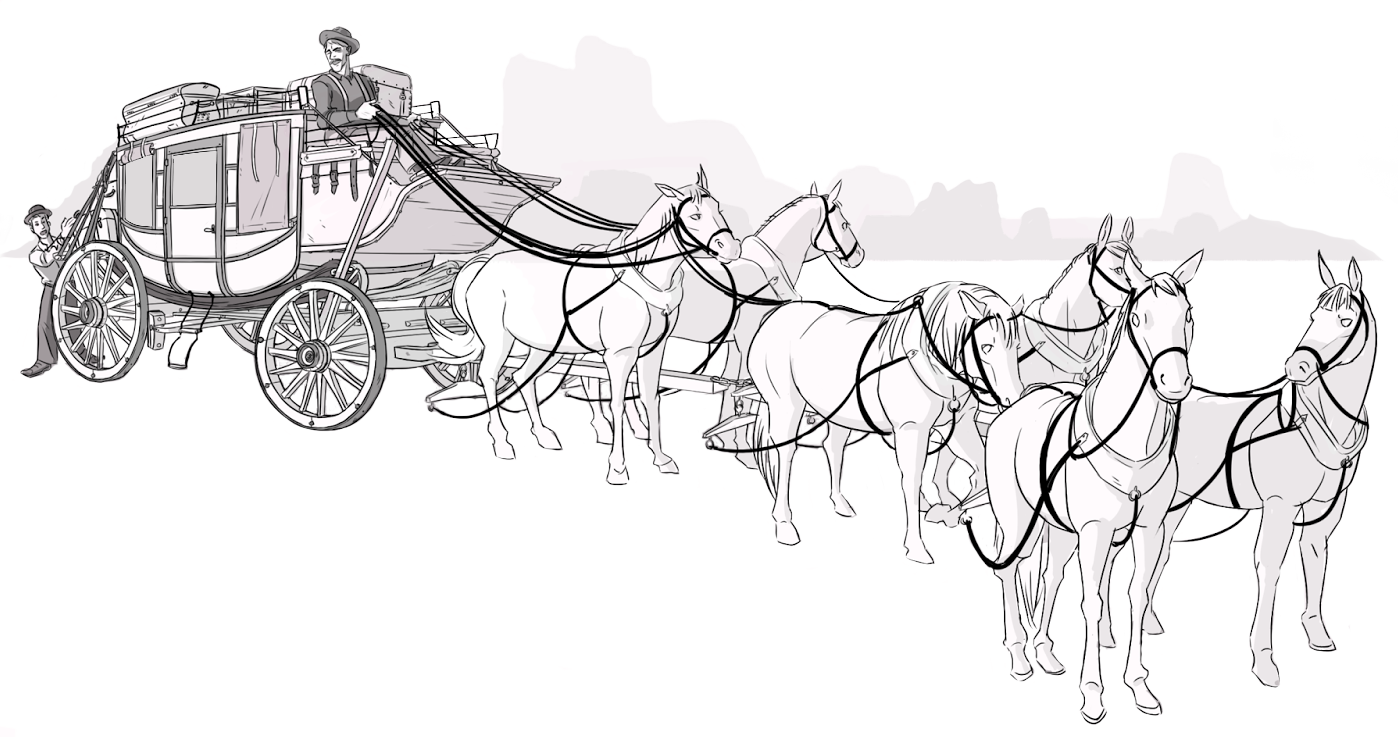 |
Letter 7 |
Charles and Madeleine Meysan's General Store |
However, today that changes. Mr. Meysan has asked me to help at his general merchandise store. It was the first building to rise up out of the rubble of the quake, built this rime of wood brought here by the well known freighter Remi Nadeau. |
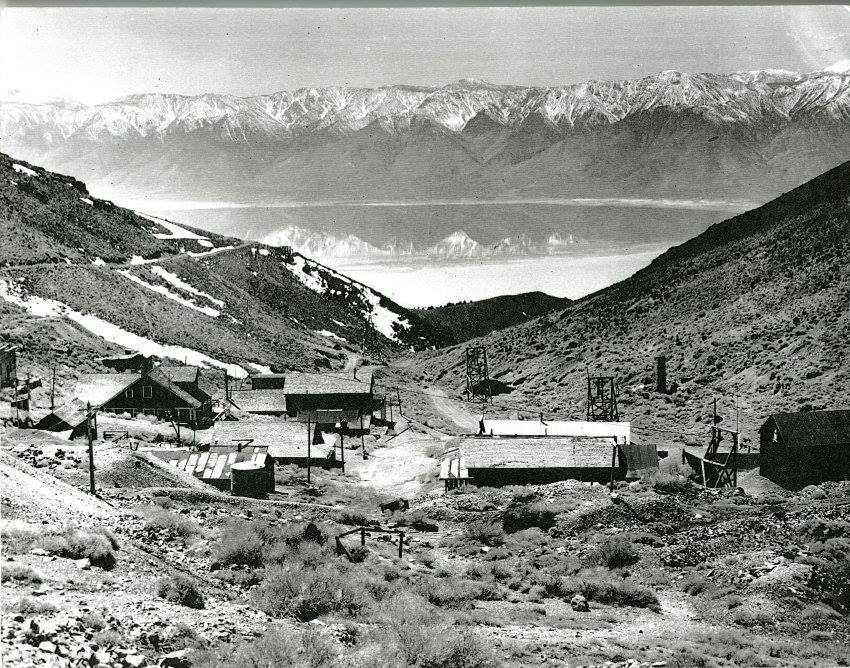 Cerro Gordo - with Owens Lake glimmering in the background. (Photo courtesy of the Friends of Cerro Gordo) |
|
Letter 17 The 1872 Earthquake |
|
| This mood of euphoria was dispelled quickly when they began to discuss the '72 earthquake. The memory of it remains strong for chose who stay on here, even though it has been six years and the town has rebuilt itself well, Mr. Meysan's store being the first one completed. But everyone lost someone dear to them, either family or friend--the line between almost indiscernible. |
|
Collapsed building in Lone Pine from the 1872 earthquake. (USGS photo) |
Collapsed building in Lone Pine from the 1872 earthquake. (USGS photo) |
Letter 47 News from the Mines of Cerro Gordo and Bodie |
|
|
(November 30) So much has happened in Lone Pine and Independence that Mrs. Kennedy had not included in her letters to me. I came home to find many changes having taken place in the area, even a new town forming just south of Swansea at the foot of the Inyos below Cerro Gordo. It is called Hawley. The Owens Lake Mining and Milling Company purchased Col. Stevens' old lumber company for the construction materials it could provide in the building of the town. They restored the old flume, repaired the adobe beehive charcoal kilns, started up the sawmill, and are building a mill to process the remaining ore to be brought down the hill from Cerro Gordo. The town of Hawley is the responsibility of Mr. Julius Keeler, the man who has been at the heart of its development. He was pointed out to me the other day as I walked through the plaza past the stables while taking some fresh air, so I introduced myself. He is a distinguished gentleman of mid years, thinning hair parted on the side, a full white mustache and side whiskers that almost entirely hide his mouth. He looks robust and sturdy, with kind intelligent eyes and a deep authoritative voice. We spoke briefly of general things in the area and of his new town. (Later) The post arrived and a letter from Frank with it, in far more detail than any of the others. He tells me that the day after I left Bodie the town became lively with campaigning for the upcoming presidential election. Frank writes, "We now know that our twentieth President is James A. Garfield. Bodie gave him 640 votes (compared with 553 for Hancock). If the Federal 1880 Census for Bodie is correct, that there are 5,375 people living here, it seems a very poor turnout of voters. I always thought the claims of 10,000 people had to be a considerable over-statement, even considering the criminal element that would avoid being counted." Frank also relates that the bitter cold month was not wet enough to stop a large fire on the hill. "With the shrill whistles of the Mono, Bodie and Lent mines blasting, the fire companies made haste up the hill. The fire devoured the Goodshaw Hoisting Works and filled the sky with the most terrifying sight possible for our dry town. Four miners working at the 600-foot level died in the fire. Much of November has seen the temperature dip 18 degrees below zero on the Bodie flats, and I am doubly glad I made you return to Lone Pine. Of course, this weather is causing a rush for wood once more and we are paying $2.00 per cord, for now." I very much missed not sharing Thanksgiving with Frank, but Mrs. K and I shared supper with the Carringtons at their home. They would not hear of our bringing anything other than our appetite. Her pie crust being so much better than my own, I nevertheless complemented it only once for fear that if l did so twice, she would offer to teach me the fine art of proper pie making. I am not in shape for that right now. Frank says Bodie citizens hold to high hopes for the future, since the aggregate value of what will be taken from the mines this year is expected to top that of last year. Best news of all, Vince continues to hold his own. Of course, knowing Bodie as we do, overnight all the bad news can change to good. And all the good news to bad. |
|
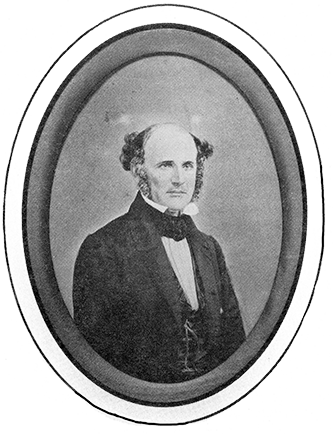 Julius Keeler (Photo courtesy Bob Likes) |
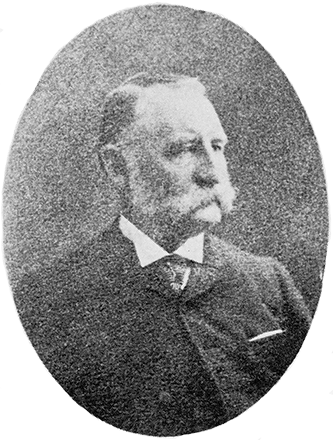 Col. Sherman Stevens (Photo courtesy Bob Likes) |
Letter 49
Owens Valley - A Valley of Pioneers |
This Valley is the product not merely of mines, pastures of grazing cattle, fields of wheat and alfalfa, gardens of furrowed rows, or orchards of ripe fruit, but of optimistic dreams, belonging and community. It is families with hopes and plans; a church full of grateful people singing praises; a school with desks in neat rows and a warm stove at the front, the room full of eager children tapping chalk on their slates as they learn new things; it is the jubilant celebration of holidays with friends sharing food and memories; it is neighbor helping neighbor through trying times, and sometimes standing together in the cemetery, or more happily gathered for a wedding or christening. |
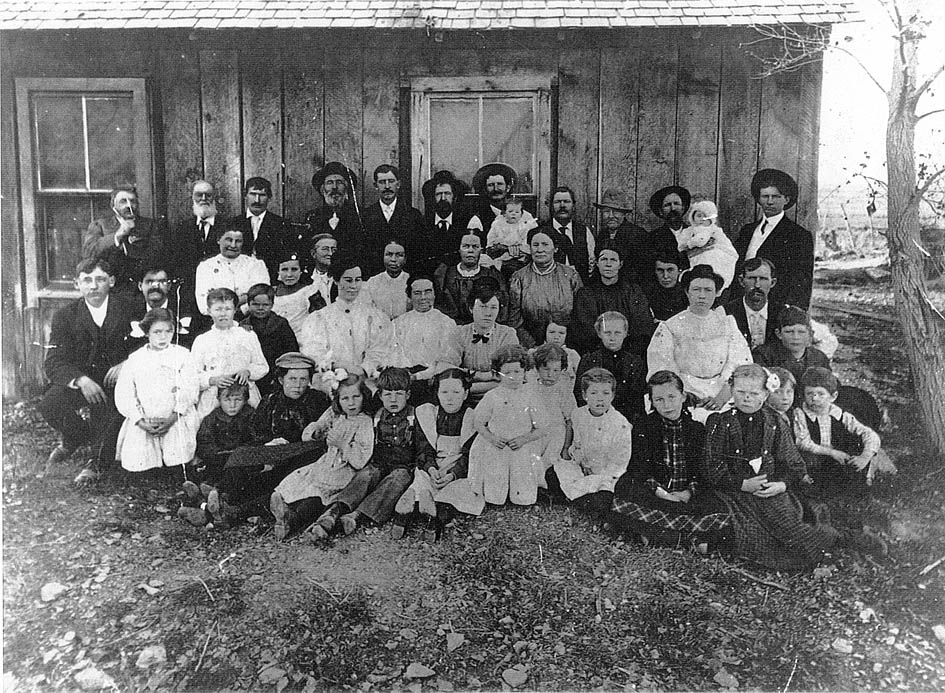 The Van Fleet family on Thanksgiving Day 1907 in Laws, CA. (Photo courtesy of Carol Van Fleet Viscarra) |
Letter 50
Ann B. Kennedy's Last Will and Testament |
|
"To my dear friend Emily Eastman I leave the boarding house and all its furniture and contents not given to friends as mentioned previously in this Will. I leave this to you as 'sole trader'. Mr. Rose assures me this is quite legal. I want you to have the security that a sometimes fickle life can take away. You have been the adult daughter I should have had, and having you in my life has cushioned a sense of loss that I carried until you showed up on my porch one blessed spring day.
"Emily, Frank, take care of one another. And if you will, someday tell little Whitney about Aunty Ann and let her know that she was the last great delight of my life." Only slightly aware of the voices around me expressing congratulations, pleasure and surprise, I was stunned into silence, not least of which was due to her loving words. With all that had happened over the last couple of months, I had not even begun to think about a home of our own after Whitney's birth. However, as the reality of the bequest settled in, I looked around me with a far different feeling of security than before. Nancy came to stand beside me, putting her arm around my shoulders with a tremulous smile. "It's all yours, Emily." "I wonder how it will feel to be the lady of the house." She chuckled gently. "My dear, you always have been!" I looked at her in amazement. ''Ann once told me that when she opened the door to you in the spring of '78, she felt she was welcoming someone who had finally come home." "I had no idea she felt that way! So you're not surprised she left it to me.?" She colored slightly. "Not at all." Then quickly changing the subject, she asked, "Where's Mr. Rose?" "He went out to his buggy to get something." At that moment he re-entered the dining room carrying a large box. Putting it in front of me, he put his hat on and stood back. "Mrs. Kennedy said you should be given this after everything else had been done. She left no note or words in the Will, saying it would speak for itself." "Would you care to be alone?" Mrs. Carrington asked. I took her hand. "No. Please stay, Nancy." After Mr. Rose departed, I lifted the lid. Pulling aside the top folds of a white sheet, revealed beneath were bright colors of fabric. Together Nancy and I pulled out the story quilt Mrs. K had worked on most of her life. Only now, the last six blocks were there and the whole mounted on a pale yellow cloth. The first of the new ones had the pink applique silhouette of two women shaking hands in front of a ridge of blue mountains remarkably similar to the Mt. Whitney skyline. The second was a black applique silhouette of a man and woman holding hands within the ring of a golden wedding band with a red ruby on top. The third was a tan baby cradle with a little pink arm and hand sticking straight up, fingers spread wide in greeting. Whitney's birth date was beneath in tiny pink cross stitches. Sewn with far less precision than the rest, it must have been the last stitching she ever did. The fourth was a large brown cross in the common outline stitch, with the name Ann B. Kennedy sewn in gold thread on the horizontal piece of the cross. Little French knot pink, yellow and lavender flowers were scattered around its base. The area for the date was of course blank, left for me to fill in now. The fifth had the outline of a partially unrolled gold scroll with the tiny word "Deed" back-stitched at the top. The inked signatures of the three people who had witnessed the Will were lined across the bottom--Charles Meysan, Abe Carrington, and Julius M. Keeler. The sixth and last square had three red hearts, two large ones overlapping, and a small one beneath entwined in the other two by a swag of green leaves. In the upper left corner was the Lone Pine tree embroidered in tiny stitches of green and brown. In the upper right corner was the tiny pink silhouette of an angel with the blue embroidered initials beneath ''ABK." We stood there taking in the detail of each block, speechless in our admiration of its beauty, and its incredibly special meanings. "Oh Emily, this is wonderful!" Nancy whispered. "She described to me the block with the baby's hand and the one with three hearts, right after she heard you were expecting Whitney. But I had no idea she'd finished the whole thing. Did you?" "No." I swallowed with difficulty. ''I'd forgotten all about it and just assumed it was still packed away." "Will you put it on your bed?" I thought for a moment. "No. I don't want anything to ever happen to it. It will hang on the wall over our bed." Frank came in just then. ''Aren't you going to join us?" He came nearer. "What's that?" Nancy and I each took an upper corner, and Frank took hold of the bottom, spreading it out between us. Millicent came in, and she too studied each of the blocks, but when she came to the last ones at the bottom, she gasped and fled into the kitchen with a hand over her mouth. Nancy whispered, "I think I'll join her." Dropping her corner, she rushed after Millicent. Shortly we heard them splashing water from the pump, followed by choked embarrassed laughter. "I think we should share this with the others," Frank finally said. And so we did, everyone impressed with the simple yet profound honesty and beauty such an expression of love implies. The women dabbed at their eyes while the men cleared their throats manfully, but we all agreed with Madeleine Meysan when she said, "It's just like her to do something like this. She'll be so missed." |
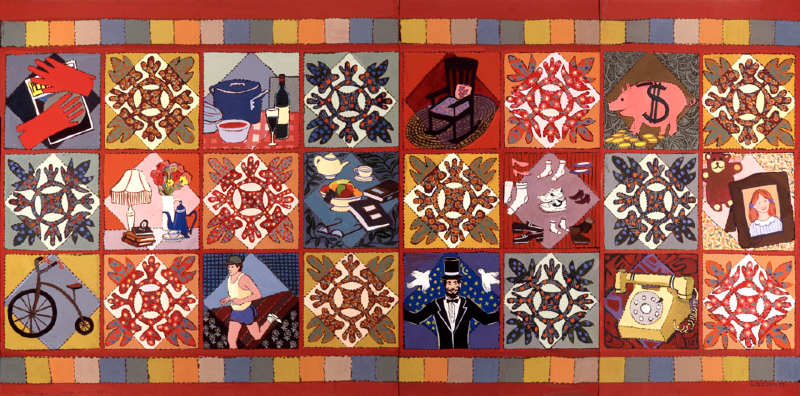 |
Letter 55
Recap - 1883, 1890, 1894, 1895 |
|
1883 The State passed a moratorium on the shooting of bighorn sheep, and hopefully they will slowly regain their numbers. |
 Carson & Colorado Railroad, CA. (Photo courtesy of Rich McCutchan) |
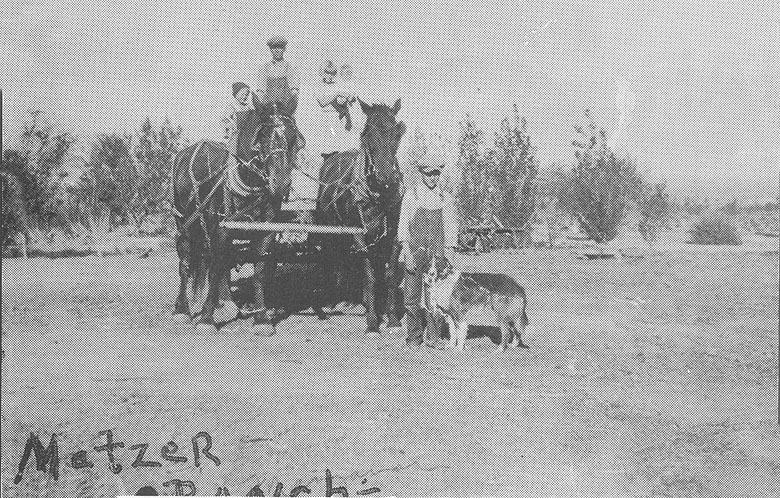 Farm in Manzanar (Photo courtesy of Rich McCutchan) |
Further Reading |
"Dear Carrie: Letters from the Eastern Sierra 1878 - 1899" by Kathleen Haun Copies of this book are available through Amazon.com |
| Olancha Remembered | ||
| Tunnel Airfield | ||
| Andrew Forbes | ||
Mountains, Mules and Memories |
||
Jordan Hot Springs |
||
Saga of Inyo County |
Sign Guestbook View Old Guest Book Entries Oct 1999 - Feb 2015 (MS Word) |
 CONTACT the Pigmy Packer |
View Guestbook View Old Guest Book Entries Oct 1999 - Feb 2015 (PDF) |
